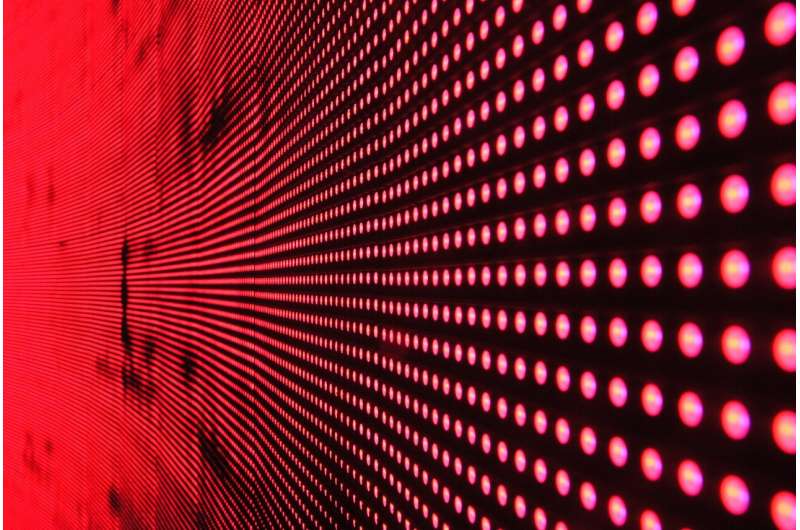
A team of scientists—led by Yamin Zhang, Ph.D., and Colin Franz, MD, Ph.D., at Shirley Ryan AbilityLab and John Rogers, Ph.D., at Northwestern University—has developed novel technology with the potential to change the future of drug delivery.
The device developed represents the first implantable drug delivery system that is triggered by external light sources of different wavelengths, and not by electronics. It also is the first to be absorbable by the body (avoiding surgical extraction) while still allowing active control and programming by the operator (e.g., a doctor, nurse or patient). A study highlighting the device has been published today in the Proceedings of the National Academy of Sciences.
“This technology represents a breakthrough addressing shortfalls of current drug delivery systems—one that could have important and sweeping implications for everything from the opioid epidemic to how cancer treatments are precisely delivered,” said Colin Franz, MD, Ph.D., physician-scientist at Shirley Ryan AbilityLab.
Current implantable drug delivery systems are used to treat medical conditions ranging from chronic pain and muscle spasticity to cancer and diabetes. Passive systems enable gradual release of drugs and don’t require extraction at the end of their use, but they cannot be actively controlled by the user (e.g., turning drug delivery off, up or down). Conversely, active systems that allow programmable drug release require power supplies and electronic parts, and eventually require a second surgery for device extraction.
To test this novel technology, researchers surgically implanted it into the right sciatic nerve of individual rats. Each device contained three drug reservoirs filled with lidocaine, a common nerve-pain-blocking drug. Then, three LEDs were placed over the implantation sites to trigger release of the drug. Subsequent testing showed marked pain relief among the rats. Moreover, researchers were able to achieve different patterns of pain relief depending on the LED color-light sequencing.
“We found this approach to be an effective, safe and non-addictive alternative to systemically delivered pain medications,” said Northwestern University’s John Rogers, Ph.D. “Additionally, it can be scaled. Although we used a combination of three LEDs in our proof-of-concept testing, moving forward we can potentially increase it up to 30 different LED wavelengths, offering many more programs for pain relief.”
In future studies, the scientific team will review various safety elements prior to seeking U.S. Food and Drug Administration (FDA) clearance for human clinical trials.
“This technology has many promising implications in rehabilitation medicine and beyond, and the collaboration among physicians, material scientists and biomedical engineers at Shirley Ryan AbilityLab and Northwestern University is rapidly accelerating clinically relevant discoveries,” said Dr. Franz, who also is an assistant professor of Physical Medicine and Rehabilitation and Neurology at Northwestern University Feinberg School of Medicine.
Shirley Ryan AbilityLab

